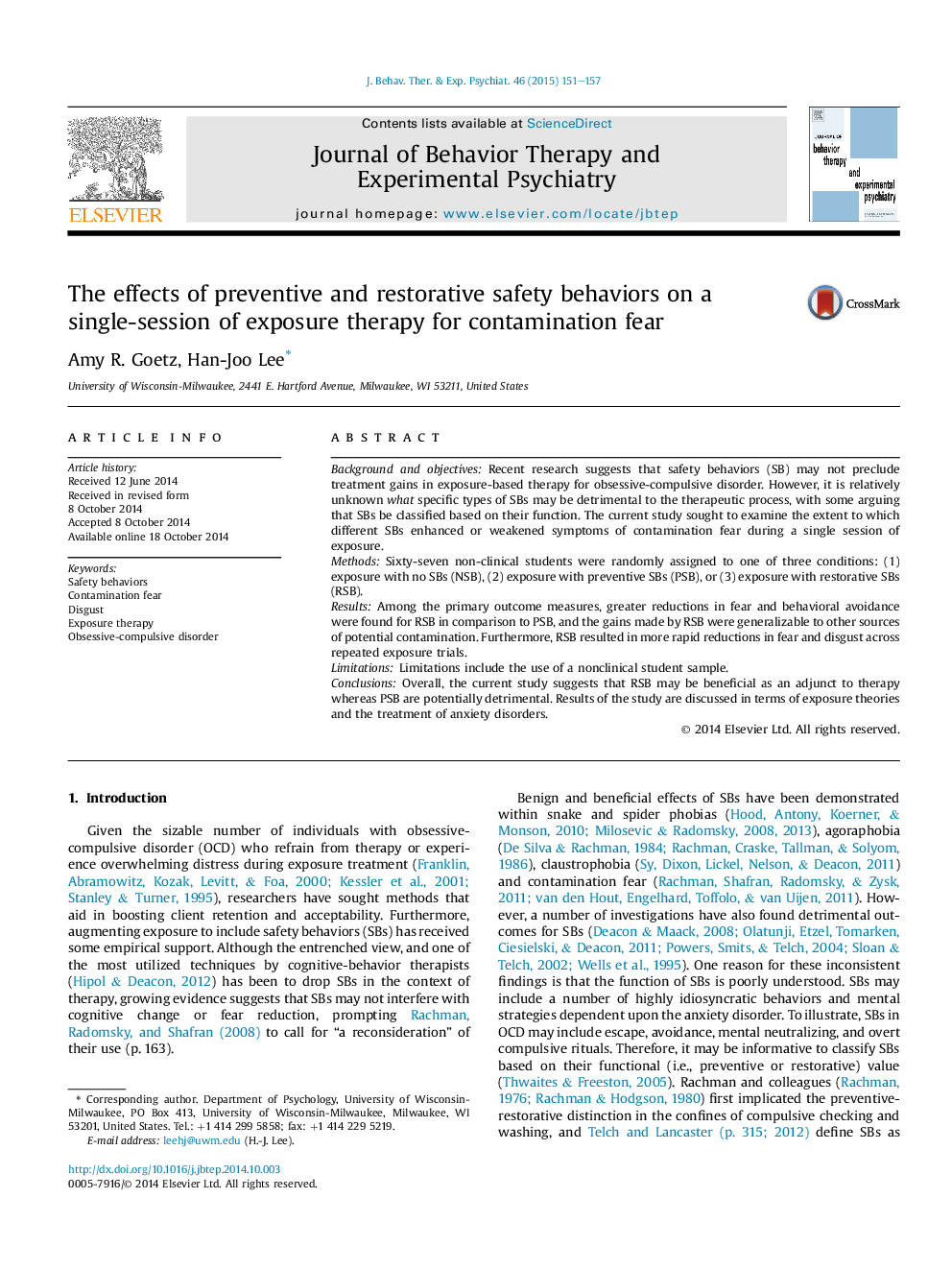| Article ID | Journal | Published Year | Pages | File Type |
|---|---|---|---|---|
| 910356 | Journal of Behavior Therapy and Experimental Psychiatry | 2015 | 7 Pages |
•Research suggests that safety behaviors (SBs) may interfere with fear reduction.•The distinction between preventive vs. restorative SBs has not been studied.•Exposure with preventive or restorative SBs was compared with exposure only.•Restorative SBs were not detrimental to exposure outcomes.•Preventive SBs undermined exposure outcomes.
Background and objectivesRecent research suggests that safety behaviors (SB) may not preclude treatment gains in exposure-based therapy for obsessive-compulsive disorder. However, it is relatively unknown what specific types of SBs may be detrimental to the therapeutic process, with some arguing that SBs be classified based on their function. The current study sought to examine the extent to which different SBs enhanced or weakened symptoms of contamination fear during a single session of exposure.MethodsSixty-seven non-clinical students were randomly assigned to one of three conditions: (1) exposure with no SBs (NSB), (2) exposure with preventive SBs (PSB), or (3) exposure with restorative SBs (RSB).ResultsAmong the primary outcome measures, greater reductions in fear and behavioral avoidance were found for RSB in comparison to PSB, and the gains made by RSB were generalizable to other sources of potential contamination. Furthermore, RSB resulted in more rapid reductions in fear and disgust across repeated exposure trials.LimitationsLimitations include the use of a nonclinical student sample.ConclusionsOverall, the current study suggests that RSB may be beneficial as an adjunct to therapy whereas PSB are potentially detrimental. Results of the study are discussed in terms of exposure theories and the treatment of anxiety disorders.
